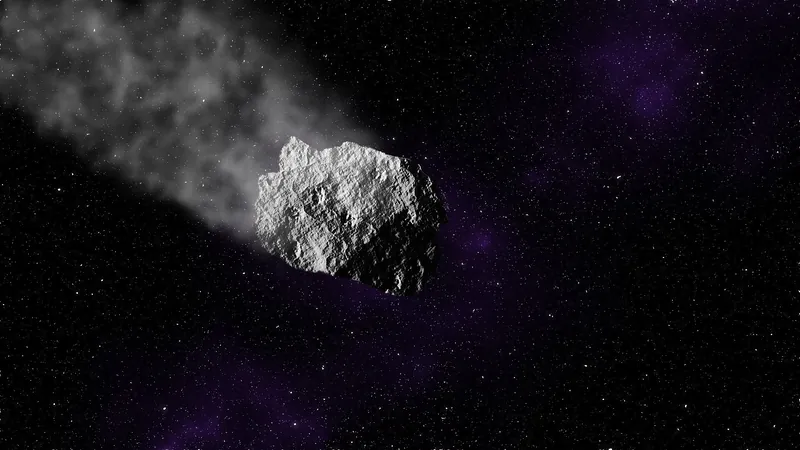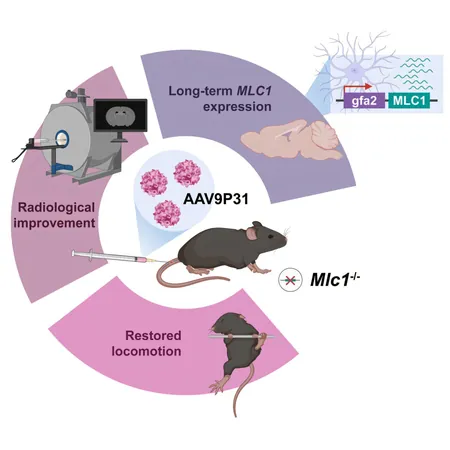
NASA's Bold Move: The Next Generation of Planetary Defense Against Killer Asteroids!
2025-03-27
Author: Daniel
NASA's Bold Move: The Next Generation of Planetary Defense Against Killer Asteroids!
The threat of a cataclysmic asteroid impact is very real, and scientists at NASA's Jet Propulsion Laboratory (JPL) are stepping up to safeguard our planet. In the depths of the solar system, there could be a massive rock on a collision course with Earth, and if it strikes, the consequences could be fatal for life as we know it.
Introducing the NEO Surveyor
Enter the Near-Earth Object (NEO) Surveyor, a groundbreaking $1.4 billion infrared telescope currently under construction. Its sole mission? To detect asteroids and comets that may pose a threat to our planet. With around 2,500 known asteroids larger than 140 meters identified, experts believe there could be as many as 25,000 of these celestial threats lurking in space.
Leadership and Mission Goals
Leading the charge is Amy Mainzer, a UCLA planetary science professor and the head of the NEO Surveyor mission. "We still don’t know everything that's in our own backyard,” she emphasizes. "And if we do need to mount a defense against an incoming threat from space, it all starts with knowing that there's something there and having enough time to plan."
The Importance of Asteroid Detection
Asteroids, the remnants from the solar system's formation, can vary in size and potential destructiveness. The NEO Surveyor is responding to a 2005 Congressional mandate to catalog 90% of these nearby space rocks above 140 meters—a size capable of obliterating cities and possibly triggering extinction events similar to what wiped out the dinosaurs. Scheduled for launch on September 13, 2027, from Cape Canaveral, Florida, the telescope aims to identify two-thirds of the estimated threats within its first five years and track a staggering 90% over its first decade.
How NEO Surveyor Works
What makes NEO Surveyor special? Unlike ground-based telescopes that can only see the most significant asteroids, this observatory operates under infrared wavelengths. As these asteroids absorb sunlight, they emit heat, allowing NEO Surveyor to detect them glowing against the dark expanse of space—like red Christmas lights twinkling in the night.
Strategic Positioning
Positioned at the first Lagrange point (L1), about one million miles from Earth, NEO Surveyor will monitor the solar neighborhood from a unique vantage point, providing a clearer and more comprehensive view than current telescopes can achieve. The more data collected, the better astronomers can predict asteroid trajectories—crucial information required for any potential deflection efforts.
Historical Context of Asteroid Impacts
Historically, the impact of a colossal asteroid is not just a topic for science fiction. About 66 million years ago, a 7.5-mile-wide asteroid struck the Yucatán Peninsula, leading to one of Earth’s most famous mass extinctions. More recently, in 2013, a smaller asteroid exploded over Chelyabinsk, Russia, injuring over 1,600 people due to shattered glass.
Preventive Measures and Techniques
Given that asteroids often follow predictable orbital paths, early detection is our best hope to avoid disaster. This is where technologies like the DART (Double Asteroid Redirection Test) mission come into play. In 2022, DART successfully altered the trajectory of a small asteroid, proving that proactive measures can be taken.
Experts Weigh In
Experts suggest various methods for deflecting asteroids, such as nudging them with spacecraft gravity or retrofitting their surfaces to change their solar heating patterns. As Mainzer highlights, "It starts with knowing there's something there and having enough time to plan."
Looking to the Future
So, while the threat from outer space looms, NASA's advancements in planetary defense give us hope. With renewed focus and innovative technology, we are steadily moving towards ensuring Earth’s safety against potential asteroid impacts. Stay tuned as we keep our eyes to the sky, and remember—knowing what’s lurking out there is the first step in securing our future!



 Brasil (PT)
Brasil (PT)
 Canada (EN)
Canada (EN)
 Chile (ES)
Chile (ES)
 Česko (CS)
Česko (CS)
 대한민국 (KO)
대한민국 (KO)
 España (ES)
España (ES)
 France (FR)
France (FR)
 Hong Kong (EN)
Hong Kong (EN)
 Italia (IT)
Italia (IT)
 日本 (JA)
日本 (JA)
 Magyarország (HU)
Magyarország (HU)
 Norge (NO)
Norge (NO)
 Polska (PL)
Polska (PL)
 Schweiz (DE)
Schweiz (DE)
 Singapore (EN)
Singapore (EN)
 Sverige (SV)
Sverige (SV)
 Suomi (FI)
Suomi (FI)
 Türkiye (TR)
Türkiye (TR)
 الإمارات العربية المتحدة (AR)
الإمارات العربية المتحدة (AR)